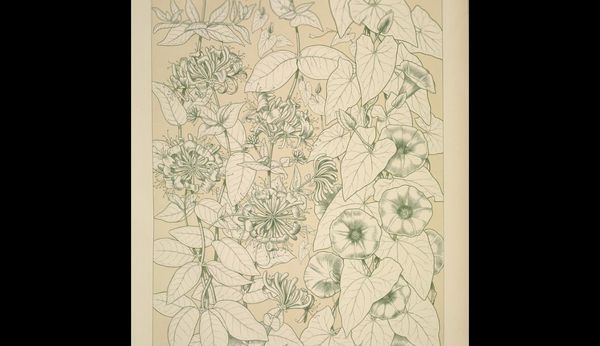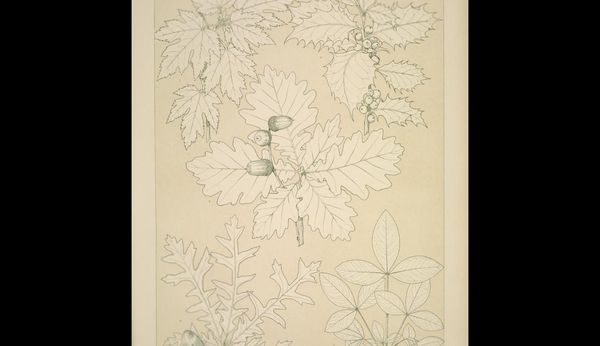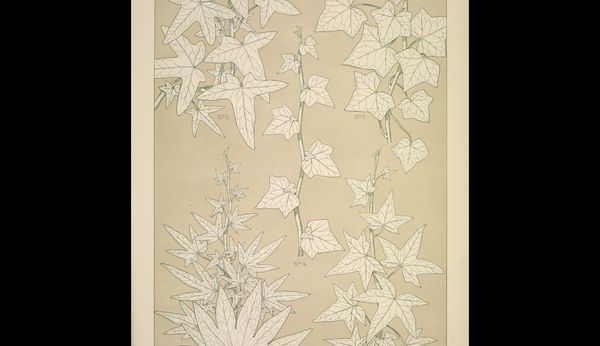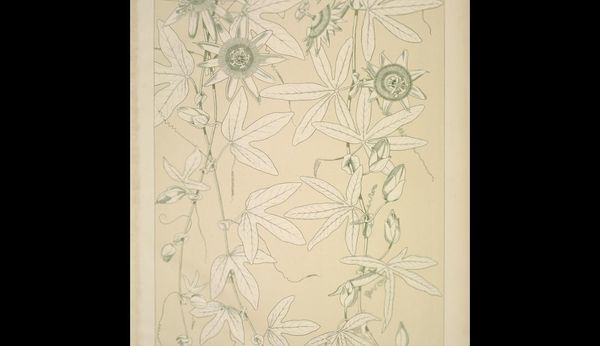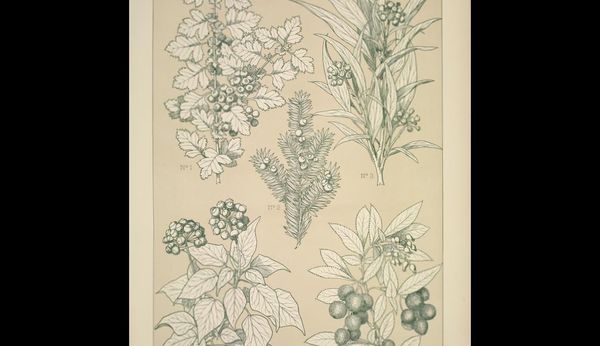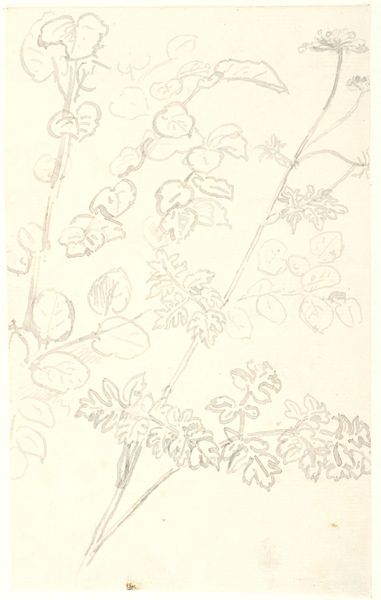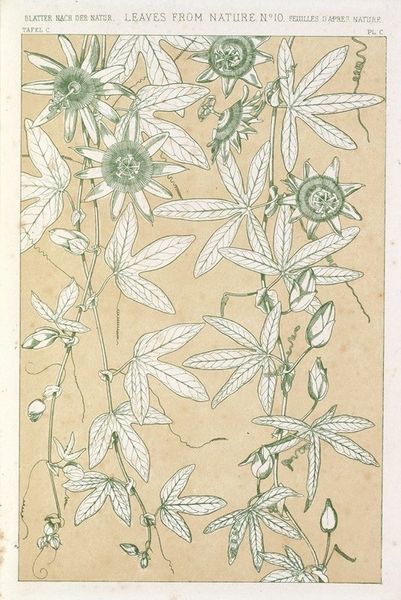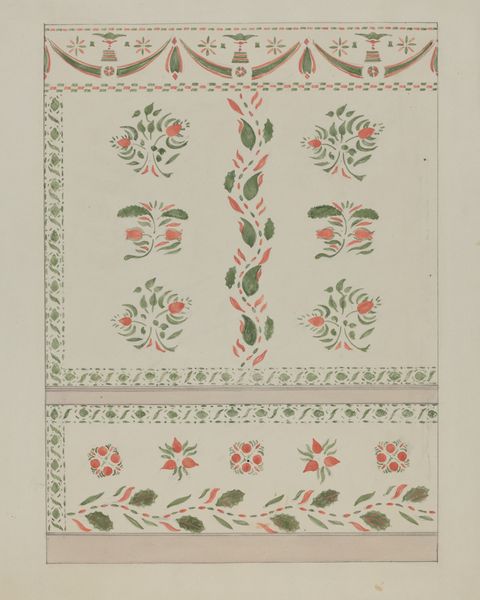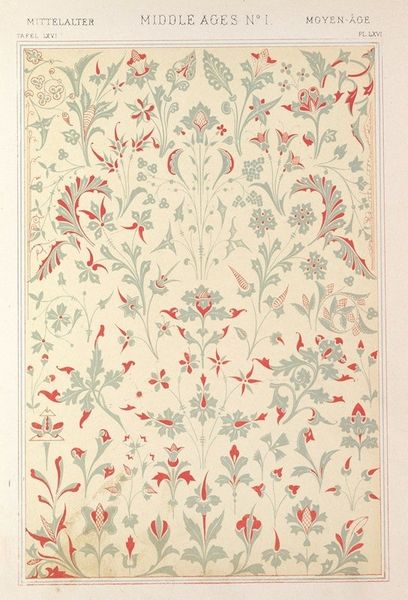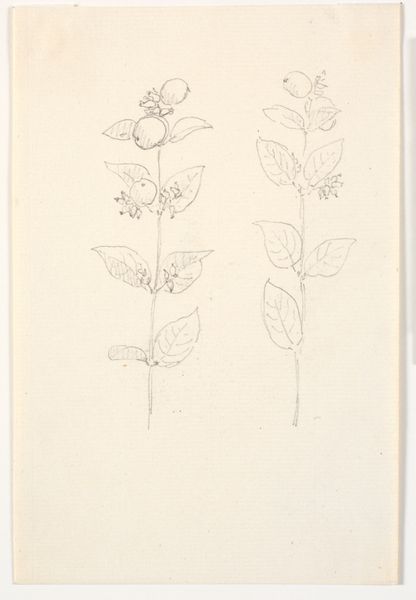
Leaves and Flowers from Nature Ornament no. 4. Leaves of the Oak, Fig Tree, Maple, White Bryony, Laurel, and Bay-tree, full size
0:00
0:00
drawing, linocut, paper
#
drawing
#
naturalistic pattern
#
organic
#
linocut
#
paper
#
geometric pattern
#
linocut print
#
organic pattern
Copyright: Public domain
Curator: Good morning. Today, we are looking at "Leaves and Flowers from Nature Ornament no. 4. Leaves of the Oak, Fig Tree, Maple, White Bryony, Laurel, and Bay-tree, full size" by Owen Jones. The piece is a drawing and linocut print on paper. Editor: You know, I find this instantly calming. The subtle interplay of muted greens and the cream paper feels like a whispered secret from a forest. There’s an understated elegance in its organic complexity. Curator: Yes, Jones has clearly studied these diverse leaves, abstracting their forms while meticulously preserving their characteristic venation. Notice how each species is carefully delineated, creating a sophisticated balance of realism and stylization. The drawing reveals how closely Jones paid attention to form and morphology. Editor: Right, it is that controlled stylization that gets me thinking. It feels almost like a blueprint, less about representing nature, and more about offering up a recipe for re-imagining it. Makes me think about how we classify and then recompose the natural world around us. Curator: A key element of Jones' approach is certainly the simplification of natural forms into geometric patterns. This aligns with his broader design philosophy, where he advocated for abstracting natural motifs to achieve harmonious decorative schemes, perfectly attuned to architectural settings. Editor: It is more than mere decoration. It is like he is trying to distil some essential truth from all these different plants. Look at how the laurel's sleek elegance plays off the oak's rougher outline, that balance is at the heart of nature's beauty. It’s less about being in nature, and more about holding its essence in your hand. Curator: It becomes quite clear that for Owen Jones, art wasn’t just about imitation but, fundamentally, it involved an intellectual act. He translated the profusion and variance of natural forms into organized, structured compositions governed by an inner logic. Editor: Agreed. It feels incredibly relevant today too. In a time where we are so disconnected, something as simple as really, truly looking at a leaf becomes radical. It reminds you that nature’s pattern is there for us, inviting participation and reminding us that maybe our structures are simpler than we think. Curator: A truly incisive observation. Well, that draws us to the close of this examination, leaving, I believe, us with more appreciation for the intricate nature of the art form. Editor: Yes, what I love most is this feeling of simplicity when confronted by such organic yet structured artwork. It is very intriguing!
Comments
No comments
Be the first to comment and join the conversation on the ultimate creative platform.
